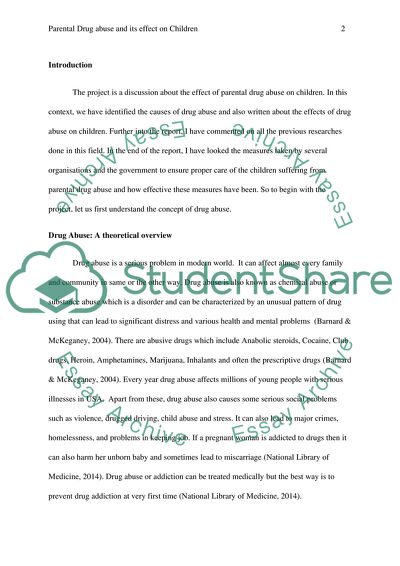Cite this document
(Parental Drug Abuse and its Effect on Children Thesis Example | Topics and Well Written Essays - 5000 words, n.d.)
Parental Drug Abuse and its Effect on Children Thesis Example | Topics and Well Written Essays - 5000 words. https://studentshare.org/sociology/1842056-to-what-extent-are-outcomes-determined-by-current-public-health-policy-for-children-affected-by-parental-drug-abuse-satisfactory-in-the-uk
Parental Drug Abuse and its Effect on Children Thesis Example | Topics and Well Written Essays - 5000 words. https://studentshare.org/sociology/1842056-to-what-extent-are-outcomes-determined-by-current-public-health-policy-for-children-affected-by-parental-drug-abuse-satisfactory-in-the-uk
(Parental Drug Abuse and Its Effect on Children Thesis Example | Topics and Well Written Essays - 5000 Words)
Parental Drug Abuse and Its Effect on Children Thesis Example | Topics and Well Written Essays - 5000 Words. https://studentshare.org/sociology/1842056-to-what-extent-are-outcomes-determined-by-current-public-health-policy-for-children-affected-by-parental-drug-abuse-satisfactory-in-the-uk.
Parental Drug Abuse and Its Effect on Children Thesis Example | Topics and Well Written Essays - 5000 Words. https://studentshare.org/sociology/1842056-to-what-extent-are-outcomes-determined-by-current-public-health-policy-for-children-affected-by-parental-drug-abuse-satisfactory-in-the-uk.
“Parental Drug Abuse and Its Effect on Children Thesis Example | Topics and Well Written Essays - 5000 Words”. https://studentshare.org/sociology/1842056-to-what-extent-are-outcomes-determined-by-current-public-health-policy-for-children-affected-by-parental-drug-abuse-satisfactory-in-the-uk.


